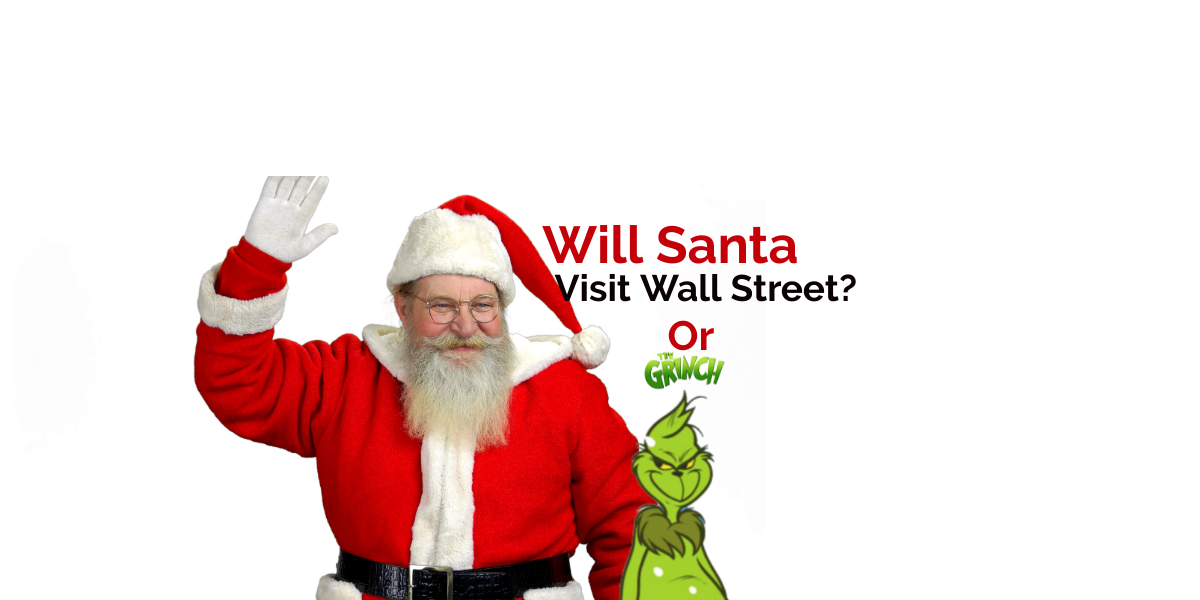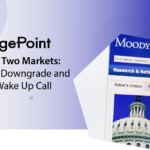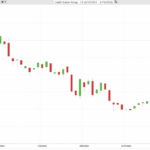Santa Claus Rally Is Real: 77% Odds of a Gain in the Seven-Day Holiday Window (Avg 1.3% Return)
The holiday season is steeped in tradition, joy, and reflection. Beyond its seasonal warmth, it also stirs a long-running curiosity on financial markets: the Santa Claus Rally. This is the period spanning the final five trading days of December through the first two trading days of January, during which a notable portion of the market’s gains historically accrue. For decades, traders at swing computers have watched this seven-day window with anticipation, the idea being that Santa Claus will deliver higher asset prices. The concept first drew broad attention in 1972 when Yale Hirsch of the Stock Traders Almanac identified a robust seasonal pattern that stood out as more reliable than many other market patterns he had explored. According to Hirsch, this seven-day period often produced positive returns, and he extended his analysis for the Dow Jones Industrial Average all the way back to 1896. In most instances, the seven-day window yielded a positive result, reinforcing the belief in the Santa Claus Rally as a real seasonal phenomenon. Over time, many market observers have drawn the further conclusion that the rally can serve as a predictor for market performance in the ensuing calendar year, a topic that this article also examines in depth.
Santa Claus Rally: Origins, Window, and Historical Pattern
The Santa Claus Rally is defined by a precise, recurring timeframe within the calendar. It encompasses the last five trading days of December plus the first two trading days of January. This seven-day segment has been studied extensively, with Hirsch and others compiling data that spans more than a century, including the late 19th and early 20th centuries. In examining Dow Jones Industrial Average data from 1896 onward, researchers found that during most occurrences of this seven-day window, the market produced a positive yield. The pattern’s consistency across long horizons gave traders confidence that there is a real seasonal tendency at work, rather than a one-off anomaly.
From a practical standpoint, the Santa Claus Rally is appealing because it conveys a sense of predictability within a season traditionally characterized by festive optimism. Yet, like any pattern tied to financial markets, it is not a guaranteed outcome. It does not guarantee a rise in asset prices every December, nor does it promise a particular trajectory for the market in the year ahead. Nonetheless, the historical tendency to produce positive returns during this window has made the rally a staple consideration in year-end and early-year trading strategies. The rally’s enduring presence in market lore is reinforced by the breadth of data spanning many decades, which suggests that the effect is more than a mere coincidence. The seven-day period often yields gains, and the market participants who study these patterns frequently weigh the Santa Claus Rally alongside other macroeconomic signals to calibrate expectations for December and January.
A broader discussion surrounding the Santa Claus Rally often touches on its potential implications for the following year. Some analysts argue that the rally’s strength or weakness might foreshadow the market’s behavior over the next twelve months. This interpretation has led traders to monitor the rally not only for immediate opportunities but also as a potential signal about near-term momentum and annual performance. However, the exact mechanisms behind the rally remain debated, and there remains no definitive, universally accepted explanation for why the pattern arises with reliability. The recurring nature of the window, the size of the gains, and the consistent timing all contribute to the aura of the rally as a meaningful seasonal phenomenon within financial markets.
What the seven-day window includes and how it’s measured
To measure the Santa Claus Rally, researchers track daily closing prices and compute returns for the seven-day period defined by the last five trading days of December plus the first two trading days of January. This yields a seven-day cumulative return, which is then compared against the broader market performance for the same calendar period in prior years. The analysis focuses on the Dow Jones Industrial Average and extends to other major indices and market benchmarks to assess whether the pattern holds broadly or is more pronounced in specific segments. Across many studies, the rally shows a tendency toward positive returns during the window, albeit with variability in any given year. The historical record suggests that the occurrence of a positive seven-day return is common, reinforcing the idea that the Santa Claus Rally is a real, observable market effect rather than a mere statistical fluke.
The scope of the historical research
The foundational observations date back to Yale Hirsch’s 1972 work, which established the premise that December’s concluding days and January’s opening days carry a higher likelihood of positive performance. Hirsch’s analysis extended to the Dow Jones Industrial Average’s history as far back as 1896, providing a long-term lens through which to view the pattern. The research indicates that, in the majority of cases, the seven-day window yields a positive return, strengthening the belief that Santa Claus delivers more than just holiday cheer inside the markets. Over the decades, additional scholars and practitioners have expanded on this framework, testing various market segments, timeframes, and economic contexts to determine the robustness and limitations of the rally.
Why the Santa Claus Rally Happens: Theoretical Explanations
There is no single, universally accepted reason why the Santa Claus Rally arrives in December and delivers positive returns for many investors. A variety of theories have been proposed, and while none has achieved consensus, several explanations enjoy broad support among market participants and academics. These theories are not mutually exclusive; they may operate in combination, reinforcing the observed pattern during certain years and circumstances.
Among the most popular explanations are the following:
-
Christmas bonuses and year-end cash flows: Many investors receive discretionary funds or bonuses in December and prefer to allocate these funds toward equities, which are often viewed as growth-oriented investments. The stock market, as a liquid and accessible venue, becomes a natural recipient for these funds, potentially fueling demand and pushing prices higher during the rally period.
-
Tax-related behavior: December is a critical month for tax-related trading activity, including tax-loss harvesting and the rebalancing of portfolios. Investors may sell losing positions in the early part of December to realize losses for tax purposes, a process that can temporarily depress stock prices. After the tax-related activity subsides and new inflows arrive, buying pressure can reassert itself, contributing to a rebound in prices going into year-end and early January.
-
December’s historically robust performance: December is often one of the strongest months for stock market returns. While the gains are typically concentrated in the final two weeks of the month, this pattern can set a positive tone that carries into January, helping to sustain higher price levels during the rally.
-
Holiday and vacation dynamics among institutions: The holiday season can alter trading dynamics within large institutions. Some market participants may be away from desks, while others may adjust risk exposure or reallocate portfolios in preparation for the new year. These shifts in trading activity and risk appetite can influence price movements during the holiday period.
-
Behavioral and sentiment factors: The festive mood and reader-friendly narratives around the holidays can indirectly influence market psychology. Positive investor sentiment can translate into willingness to buy, contributing to a self-reinforcing effect as more participants enter the market to capitalize on perceived seasonal strength.
-
Relative liquidity and market structure: The holiday period often features thinner trading volumes in some markets, which can magnify price moves on a given day. This liquidity dynamic may contribute to more pronounced volatility or amplified gains when favorable conditions align with the rally period.
-
Other institutional timing factors: Some observers point to the tendency of institutions to adjust risk and rebalance at year-end, which can influence the pattern of flows into and out of equities during the period in question. When these adjustments occur in a way that favors stocks, the Santa Claus Rally can be reinforced.
The limits of the explanations
Although each theory has intuitive appeal, none provides definitive proof of causation. The Santa Claus Rally remains a correlation that is supported by historical data, but future results are not guaranteed. Critics caution against attributing the rally to a single driver, arguing that a confluence of seasonal, behavioral, macroeconomic, and structural factors likely plays a role. The complexity of the financial system means that a precise causal mechanism may be elusive, and market conditions in any given year can override seasonal tendencies. For traders, this means the rally should be viewed as one piece of a broader analytical framework, not as a stand-alone signal that guarantees profits.
Frequency, Magnitude, and Statistical Perspective
Across a broad historical horizon, the Santa Claus Rally has demonstrated a notable degree of reliability. Historically, the rally has occurred in roughly three out of four years, reflecting a frequency of about 77 percent during the period from 1950 to 2020. In those years, the average return during the seven-day window has been around 1.3 percent. This combination of high frequency and modest average gain makes the rally a persistent feature in the annual market narrative, one that investors often consider when evaluating year-end risk and opportunity.
From a probabilistic standpoint, statisticians analyzing market data for random seven-day trading periods have found that the likelihood of achieving a 1.3 percent gain in such a random window is about 31 percent. This comparison highlights that the Santa Claus Rally, by delivering gains more often than a typical seven-day period might, represents a stronger-than-average seasonal effect. In practical terms, this means that the rally’s probability of producing a gain during its seven-day span is disproportionately higher than the baseline chance of a similar gain in any arbitrary seven-day window.
The last two decades and notable patterns
Over the most recent decades, the Santa Claus Rally has continued to produce results that have intrigued market observers. An oft-quoted quip from Yale Hirsch captures a sentiment about what might unfold if the rally fails to materialize: “If Santa Claus should fail to call, bears may come to Broad and Wall.” This remark underscores the perceived link between Santa’s appearance and subsequent market behavior, even as it acknowledges the potential for negative outcomes if the rally does not occur. In practice, the data show that when the rally does occur, markets often experience certain favorable dynamics in the following year, though this is not a universal rule. The broader takeaway is that the Santa Claus Rally is a meaningful seasonal motif with a track record of positive instances more often than not, but it must be integrated with other indicators and macroeconomic signals to support robust decision-making.
How the rally translates into annual expectations
For traders, there is ongoing debate about whether the Santa Claus Rally meaningfully forecasts the next year’s market performance. Some studies and market commentators have suggested that a strong rally at year-end might align with stronger market performance in the year that follows, while others emphasize that the relationship is not guaranteed and can be contingent on broader economic conditions. In this sense, the rally is viewed as one data point among many that inform year-ahead expectations, rather than a definitive predictor. The takeaway for investors seeking to build robust strategies is to consider Santa Claus Rally signals within a broader framework that accounts for macroeconomic data, monetary policy, corporate earnings, inflation trends, and global events.
Data Highlights: Notable Years and Takeaways
The Santa Claus Rally period has produced a range of outcomes, including years with notable declines and years with sizable gains. For example, certain years have delivered negative results during the seven-day window, yet the market’s trajectory for the full calendar year might differ significantly. In 1999, the Santa Claus Rally generated a negative return of about -4.0 percent, and the broader year was marked by a cumulative decline of roughly -10.1 percent. Similar counterexamples exist, such as 2007, when the rally contributed to a negative result of around -2.5 percent, while the full-year performance saw a substantial decline of about -38.5 percent. In 2014, the seven-day rally recorded a negative aggregate of around -3 percent, and the annual performance for that year ended down by about -0.7 percent. These instances underscore a key point for traders: even a negative seven-day window does not necessarily predict the full-year outcome, just as a positive seven-day window does not guarantee a strong annual result. The historical record thus emphasizes the importance of context, timing, and the interaction of seasonal effects with broader market dynamics.
Yearly snapshots and what they illustrate
To complement the broad statistics, several year-by-year snapshots offer a granular view of how the Santa Claus Rally interacts with the market’s longer trajectory. These snapshots illustrate a range of outcomes across different market regimes, demonstrating that the seven-day window can be positive in some years while the overall market still moves lower for the year, and vice versa. Analysts who study these patterns emphasize the need to consider cross-cutting factors, such as earnings cycles, inflation expectations, central bank policy, and geopolitical developments, rather than treating the Santa Claus Rally as a standalone forecast. The overarching lesson is that seasonal effects exist, but their predictive power is conditional; successful trading requires integrating them with a holistic view of the market environment.
The Practical Takeaways for Traders: Context, Data Points, and Decision-Making
A central theme in analyzing the Santa Claus Rally is the distinction between what is, versus what should be. The phenomenon is anchored in observable price action during a defined period, yet the expectations around that action should be tempered by a broad array of market realities. Price, as the sole arbiter of profit or loss, is the ultimate signal; no narrative—however compelling—can override price movements when it comes to real trading outcomes. The Santa Claus Rally should be treated as one input among many, contributing to a probabilistic framework rather than as a deterministic forecast. Traders who incorporate the rally into their decision-making must balance seasonal expectations with real-time data, macro indicators, and evolving risk factors.
To illustrate how seasonal signals fit into a wider analytic approach, consider historical macro-moving parts such as central bank policy and inflation dynamics. For instance, in a recent environment where the Federal Reserve indicated intentions to adjust monetary policy—reducing asset purchases and signaling potential rate hikes—the connection between seasonal patterns and macro policy becomes particularly salient. The dot-com era of 2000 provides a cautionary reminder: even when seasonal patterns point to optimism, aggressive policy shifts can precipitate abrupt market corrections. In that period, aggressive rate hikes helped trigger a substantial decline in tech equities, underscoring that a favorable seasonal window does not immunize an investor from larger macro-driven risks.
Key cautionary notes for year-end and early-year trading
- Do not treat the Santa Claus Rally as a standalone guarantee of profits. Its predictive value is probabilistic and conditional on broader market conditions.
- Always consider the broader macro environment, including inflation, interest rates, and fiscal policy, as these factors can dominate short-term signals.
- Use the rally as a potential signal for narrowing risk or for adjusting exposure modestly, rather than as a primary driver of a trading strategy.
- Be mindful of liquidity dynamics during holiday periods, as thinner volumes can amplify price moves and increase downside risk in some situations.
- Reinforce risk management practices, ensuring that position sizing and stop parameters align with overall portfolio risk tolerance, regardless of seasonal expectations.
The role of timing and pattern recognition in modern trading
In line with this cautious approach, many seasoned traders have turned to advanced analytical tools to identify and exploit patterns. Artificial intelligence and machine learning are increasingly deployed to recognize price-action patterns, evaluate probabilities, and adapt to evolving market regimes. The core idea is to rely on data-driven signals derived from observed price movements, rather than relying on story-driven expectations. The emphasis on “pattern recognition” over narrative aligns with the broader objective of improving decision-making under uncertainty. While AI can enhance timing and trend analysis, it does not remove risk; it simply provides a structured mechanism to interpret complex data and adjust strategies in response to changing conditions. In practice, the most effective trading frameworks blend seasonal insights with real-time analytics, risk controls, and disciplined execution.
The AI Perspective: Pattern Recognition, Timing, and Market Realities
Artificial intelligence, neural networks, and machine learning offer a compelling lens through which to view market dynamics during the Santa Claus Rally and beyond. The central claim is that these technologies excel at detecting patterns in price data, discerning shifts in momentum, and forecasting near-term movements with a probabilistic mindset. Unlike subjective assessments or narrative-driven forecasts, AI tools aim to translate observed price action into actionable signals. This approach can help traders align decisions with actual market behavior, rather than with preconceived ideas about how the market should behave.
A core takeaway from discussions around AI-driven trading is the distinction between what is happening (the IS) and what one believes should happen (the SHOULD). A stock may be backed by strong fundamentals, compelling earnings, robust leadership, or strategic partnerships, but if those factors are not yet reflected in the price, a trader tuned to “IS” rather than “SHOULD” may avoid entering based on a hopeful narrative. Conversely, price-driven signals can reveal shifts that contradict optimistic beliefs, enabling traders to adjust positions accordingly. The practical value lies in pattern recognition and the disciplined timing of trades, rather than in clever storytelling about why a stock should rise.
The technology behind these approaches is not magical; it rests on statistical patterns and the ability to learn from historical data. When AI-assisted forecasting identifies a change in forecast or a shift in price behavior, it can provide a basis for timely trading decisions. Yet, even with sophisticated tools, markets remain inherently uncertain, and past performance does not guarantee future results. The discipline of trading, in this view, centers on integrating AI-driven insights with prudent risk management, diversified strategies, and ongoing evaluation of model assumptions.
Embracing a balanced, data-driven approach
- Use AI and machine learning to augment traditional analysis, not replace it. Treat AI-generated signals as one input among many.
- Continuously validate models against out-of-sample data and maintain transparency around the limitations of predictive tools.
- Ground decisions in price movements and statistically meaningful signals rather than speculative narratives about future outcomes.
- Maintain rigorous risk controls, as even pattern-based forecasts can misread market dynamics during regime shifts or extraordinary events.
Historical Reflections, Culture, and Market Mood Around the Holidays
The holiday season inspires cultural touches within market lore, including poems and sayings that capture the mood of traders during this time. One such line recalls the whimsical mood of seasons past, reflecting the sense that the market’s fate is influenced by sentiment and seasonal rhythm as much as by fundamentals. Another enduring line—often quoted in market circles—frames the Santa Claus Rally in terms of a potential shift in market psychology: a failure of the rally could herald a bear-market environment for the subsequent year. While these expressions are colorful and memorable, they underscore a deeper idea: the market’s mood around year-end has a meaningful impact on price action, and traders routinely assess sentiment as part of their decision framework.
These cultural elements exist alongside the data, helping to contextualize how investors perceive and react to seasonal patterns. The Santa Claus Rally sits at the intersection of quantitative history and qualitative sentiment—a reminder that markets are driven by both numbers and psychology. While narrative devices and poetry may not constitute scientific proof, they reflect the human tendencies that shape trading behavior during the holidays: optimism, caution, and a readiness to reposition portfolios as a new year begins.
Conclusion
The Santa Claus Rally remains a persistent feature in the study of seasonal market behavior. Its defined seven-day window—spanning the last five trading days of December and the first two trading days of January—has produced positive returns in a substantial majority of years, with an average gain around 1.3 percent across a long historical horizon. The pattern’s reliability has long attracted interest from traders seeking to understand seasonal dynamics and to calibrate expectations for year-end and early-year market activity. Yet the rally is not a guaranteed predictor of the year to come. Its power is probabilistic and conditional, meaning that macroeconomic forces, monetary policy, earnings, and global events can overwhelm or counteract seasonal tendencies.
The explanations for why the Santa Claus Rally occurs are diverse, ranging from tax-related flows and year-end bonuses to institutional rebalancing and investor sentiment. The evidence supports a real seasonal effect, but it does not establish a singular causal mechanism. Traders should treat the Santa Claus Rally as a data point within a broader analytical framework, one that integrates macro signals, price action, and risk management. In addition, the rise of artificial intelligence and machine learning offers a powerful set of tools for recognizing patterns and informing timing decisions, while still anchoring decisions in observable price changes and probability-based thinking. By balancing historical seasonal insights with real-time data and disciplined risk controls, traders can approach year-end and the new year with a more resilient and informed strategy.
In summary, the Santa Claus Rally embodies a well-documented seasonal tendency that has endured across generations of market activity. Its relevance lies not in guaranteeing profits but in enriching the trader’s toolkit with a historically supported pattern that, when combined with comprehensive analysis, contributes to more informed and disciplined decision-making during a crucial period for global markets.



